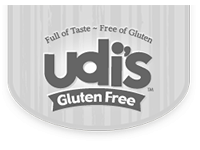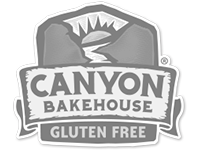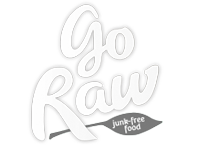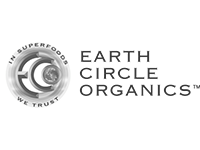Gluten Free
What does following a gluten-free diet mean? That you're embarking on an easy diet with a wide range of health-promoting effects. Instead of dwelling on what you’re giving up, consider that you’re going to enjoy a whole new world of delicious food options to meet your special dietary needs. You’ll be eating seasonally, choosing more fresh fruits and vegetables, focusing on meats, seafood, poultry, legumes, lentils, corn, and rice, and discovering fascinating ancient grains such as quinoa, amaranth, and millet. You’ll be able to eat potatoes, eggs, most cheeses, even chocolate (!)—and enjoy them without guilt because you’ll be taking good care of your body. In fact, you’ll probably end up eating—and feeling—better than ever!
Visit this page for more information about living Gluten Free
---
We carry a large variety of gluten free items, the brands listed below represent just some of the offerings we carry















More Diets

Related Topics
-
Drink to Your Health with Raw Green Smoothies
-
Vegetarians’ Special Nutrition Needs
-
More on Benefits of a Vegetarian Diet
- By Kimberly Beauchamp, ND
Going Raw? Here’s What You Need to Know
“Raw” is all the rage these days, but what does it mean to eat raw? And is it possible to get enough protein and other nutrients while following a raw diet?
Raw foods are those that have not been heated above 108°F to 118°F
Raw, defined
Most raw foodists eat only plant-based (vegan) foods, including vegetables, fruits, nuts, seeds, legumes, and seaweed. Raw foods are those that have not been heated above 108°F to 118°F, depending on who you talk to. The logic behind this is that many of the nutrients in foods are extremely sensitive to heat. This is especially true of the water-soluble vitamins, like the B-vitamins, folate, and vitamin C. As Katie McDonald, a raw food chef and certified Holistic Health Coach in Rhode Island puts it, “The more you do to a food, the less it does for you.”
Raw food advocates also look to the enzyme content of raw foods, saying that cooking destroys delicate enzymes that could otherwise go toward improving the digestion of the foods you’re eating.
Health benefits of a raw food diet
Raw food advocates say that people suffering from any kind of inflammatory condition (heart disease, diabetes, ulcerative colitis, or arthritis, for example) and people looking to lose weight, increase their energy, and reduce their risk of chronic disease, including cancer, may benefit from eating a raw food diet. While most of these claims have yet to be well demonstrated through research, some less-than-desirable effects of cooking on health are known:
- Cooking foods can lead to toxic by-products. Compounds called HCAs (heterocyclic amines) and PAHs (polycyclic aromatic hydrocarbons) form when animal protein is cooked at high temperatures, like on the grill. These substances can cause cancer in laboratory animals.
- Animal foods high in fat and protein (like meats, butter, and cheese) also contain advanced glycation end products (AGEs). The level of AGEs in these foods may increase during the cooking process. AGEs can also be found in baked goods, such as breads and cookies. These compounds promote oxidative damage and inflammation in the body, increasing the risk of diabetes and heart disease.
- Foods heated above 120°F can also contain acrylamide, a substance that may increase the risk of certain types of cancer. Potato chips and French fries are particularly high in acrylamide.
Can I get enough protein eating raw?
The World Health Organization says that 0.83 grams of protein per kg of body weight per day is a safe amount for most adults. For a 150-pound person, that would be about 57 grams of protein per day, which translates to about 11% of the total calories in a 2,000-calorie daily diet.
“We really don’t need as much protein as we’re taught that we do,” says McDonald. “If you’re eating a variety of whole plant foods, it’s easy to fulfill your protein requirements.”
According to McDonald, plant protein is easier to digest than animal-based protein because it takes longer for animal protein to pass through the gastrointestinal system. “When the body is busy digesting, it has less time to do its other functions, like keeping the immune system healthy,” McDonald says.
McDonald suggests soaking nuts, seeds, and legumes to improve their digestibility and enhance their nutrition. These foods contain enzyme inhibitors and other substances in their outer layers that can interfere with digestion if eaten prior to soaking. When they are soaked and/or sprouted, the toxic substances are removed and their nutritional content rises dramatically. Some of her favorite high-protein foods include sprouted alfalfa, lentils, aduki (aka adzuki) beans, and chickpeas. High-protein grains like buckwheat and quinoa are also tasty when sprouted. Katie makes her own almond milk by combining soaked almonds, dates, vanilla, and water in the blender.
Kids going raw
It’s certainly easier to feed the whole family the same thing, but getting kids on board with the raw lifestyle can sometimes be a challenge. Since chocolate seems to be a universal hit, here’s a recipe from Katie McDonald that highlights super-nutritious cacao nibs in a delicious treat that no one can resist.
Cacao nibs are the fruit from the pods of the cacao (cocoa) tree. They are a terrific source of magnesium and they’re also high in protein: 1 ounce of raw cacao nibs contains 4 grams of protein.
Gogi Cacao Energy Bars
Ingredients:
- 1 cup soaked almonds
- 1 cup date paste or 12 dates
- ¼ tsp sea salt
- 3 Tbs goji berries
- 2 Tbs cacao nibs
- 1 tsp vanilla
Directions:
- Line a brownie pan with parchment paper.
- Grind raw almonds into a powder in food processor.
- If using individual dates, mash them into a paste.
- Mix almonds, dates, and salt together.
- Add goji berries, cacao nibs, and vanilla.
- Press dough evenly to desired thickness and cut into bars.
What the critics are saying
With all of the purported benefits of eating raw, the diet also has its opponents.
“When the food is consumed raw, plant enzymes do not aid in their own digestion inside the human body,” says Dr. Joel Fuhrman, author of the book, Eat to Live. “It is not true that eating raw food demands less enzyme production by your body, and steaming vegetables and making vegetable soups breaks down cellulose and alters the plants’ cell structures so that fewer of your own enzymes are needed to digest the food, not more.”
While many foods are indeed healthier eaten in their raw state, others, especially those containing fat-soluble vitamins, appear to be more nutritious after cooking. Lutein and lycopene are examples of potent anti-cancer compounds that are better absorbed after cooking and when eaten with some fat.
Concerning the vitamin C content of foods, Dr. Fuhrman explains that vitamin C contributes less than 1% of the antioxidant activity of fruits and vegetables. “For example, the main antioxidant activity in apples is provided by classes of chemicals called phenolics and flavonoids, both of which are made more available by cooking.”
Cooking also destroys many potentially harmful microorganisms that can hitch a ride on your food.
What works for you?
Eating more raw foods is a great way to improve your overall health and vitality. Some people may choose to go raw for a short time as part of cleanse, while others may find that this is a way of life they’d like to continue. “If people really enjoy eating meat, I advise them to cut back, even a little bit, and to replace those calories with ones from fresh, raw foods,” says McDonald.
The bottom line is that everyone needs to find a healthful diet that works for him or her. Whenever you increase the amount of fruits, vegetables, nuts, and seeds in your diet, it’s a bonus for your body.











